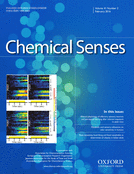
“Over the past twenty years, the acceptance and use of medicinal cannabis has increased in the United States. However, there is still a lack of education and comfort as it relates to the therapeutic uses of botanical cannabis and cannabidiol in pharmacy professional curricula. Professional training programs have failed to keep pace with the evolving national landscape and growing acceptance of this therapy.
PERSPECTIVE:
In this manuscript, the current landscape of pharmacy professional involvement in the dispensing and administration of medicinal cannabis throughout the United States is described. A concern exists that there is a knowledge gap among pharmacists and pharmacy students, as demonstrated by recent survey results, related to the pharmacology, dosing, administration, adverse effects, drug interactions, and monitoring of both medicinal and recreational cannabis use.
IMPLICATIONS:
While cannabis use is still considered illegal by the federal government, it is imperative pharmacy educators prepare the next generation of pharmacists to be knowledgeable on the safe and effective use and communication tactics related to cannabis. As a therapy garnering national attention with growing support for use, education on this topic must be included in pharmacy curricula and pharmacy continuing education.”
https://www.ncbi.nlm.nih.gov/pubmed/30497617
https://www.sciencedirect.com/science/article/abs/pii/S1877129717304860?via%3Dihub


 “The history of Cannabis goes along that of humankind, as speculated based on geographical and evolutionary models together with historic data collected to date. Its medical use is several thousand years old, as attested both by archeobotanical evidence of Cannabis remains and written records found in ancient texts from the sacred Vedic foundational texts of Ayurvedic medicine (about 800 before current era [BCE]) to the first known Pharmacopoea, the Chinese “Shen Nung Pen Ts’ao Ching” (1 century BCE). In this paper, we retrace the history of Cannabis traveling through the key stages of its diffusion among the most important ancient cultures up to our days, when we are facing a renaissance of its medical employment. We report through the centuries evidence of its use in numerous pathologic conditions especially for its anti-inflammatory, antiseptic, and anticonvulsing properties that support the requirement to direct our present research efforts into the definitive understanding of its efficacy.”
“The history of Cannabis goes along that of humankind, as speculated based on geographical and evolutionary models together with historic data collected to date. Its medical use is several thousand years old, as attested both by archeobotanical evidence of Cannabis remains and written records found in ancient texts from the sacred Vedic foundational texts of Ayurvedic medicine (about 800 before current era [BCE]) to the first known Pharmacopoea, the Chinese “Shen Nung Pen Ts’ao Ching” (1 century BCE). In this paper, we retrace the history of Cannabis traveling through the key stages of its diffusion among the most important ancient cultures up to our days, when we are facing a renaissance of its medical employment. We report through the centuries evidence of its use in numerous pathologic conditions especially for its anti-inflammatory, antiseptic, and anticonvulsing properties that support the requirement to direct our present research efforts into the definitive understanding of its efficacy.”

 “Pain and symptom control challenges are common in palliative care, and the search for other therapeutic strategies is ongoing.
“Pain and symptom control challenges are common in palliative care, and the search for other therapeutic strategies is ongoing.

 “Glioblastoma multiforme (GBM) is the most frequent and aggressive form of brain cancer. These features are explained at least in part by the high resistance exhibited by these tumors to current anticancer therapies. Thus, the development of novel therapeutic approaches is urgently needed to improve the survival of the patients suffering this devastating disease.
“Glioblastoma multiforme (GBM) is the most frequent and aggressive form of brain cancer. These features are explained at least in part by the high resistance exhibited by these tumors to current anticancer therapies. Thus, the development of novel therapeutic approaches is urgently needed to improve the survival of the patients suffering this devastating disease.